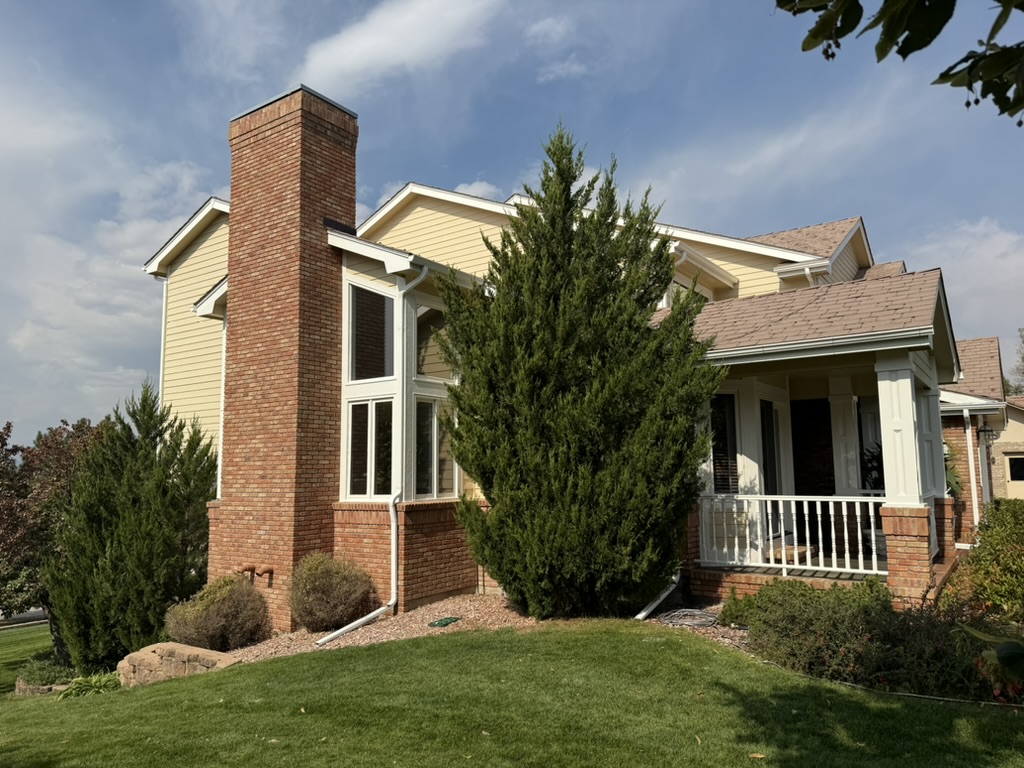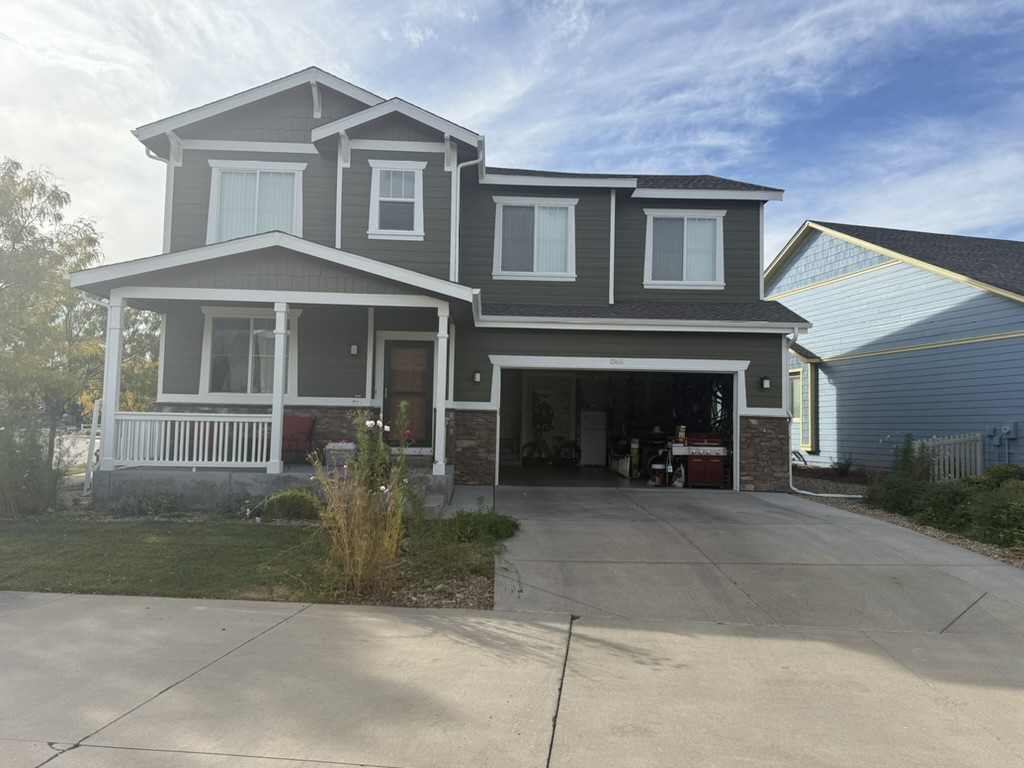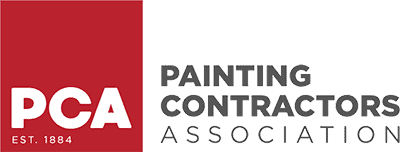When most people think of painting their home, they think of color—maybe even curb appeal or resale value. But what many homeowners don’t realize is this: a good painter does more than improve aesthetics. They’re often the first line of defense against costly hidden problems that threaten the health, safety, and longevity of your home.
Exterior rot, peeling paint, soft drywall, or water stains aren’t just cosmetic flaws. They’re signs of underlying issues—some of which can cost thousands if left unchecked.
In this article, we’ll show how a good painter sees what others miss: the early indicators of moisture intrusion, substrate failure, pest damage, or code violations. You’ll learn what a painter should be looking for, how it saves you money, and how to hire someone who cares about your home as much as you do.
Why Good Painters Look Beyond the Surface
Painting Is a Protective System—Not Just a Color Change
A good painter approaches every job with the mindset of a technician, not just a laborer. They understand that paint is part of a larger system designed to:
-
Seal out moisture
-
Protect surfaces from UV, mold, and weather
-
Prevent rot and corrosion
-
Extend the life of siding, trim, drywall, and framing
They know that poor adhesion, blistering, or mildew stains usually mean something deeper is wrong. And their training equips them to catch those problems—before new paint covers them up.
What Happens If These Problems Go Unnoticed?
Letting a painter slap on fresh paint without inspection can mean:
-
Moisture continues to seep behind siding or trim
-
Small leaks evolve into major wall damage or mold
-
Wood rot spreads unseen until it compromises structural framing
-
Rusted metal expands and destroys window frames or railings
According to HomeAdvisor, the average cost to remediate hidden water damage is $2,500–$5,000—but catching it early during prep work might cost as little as $150–$400.
Common Issues Good Painters Spot Before Painting
Here are the types of problems a good painter finds—before you ever open a paint can.
A. Wood and Siding Problems (Exterior)
| Problem | Visual Clue | Risk If Ignored | Typical Solution |
|---|---|---|---|
| Rotted trim | Dark, soft spots; crumbling edges | Spreading rot, framing damage | Replace wood, prime with oil-based primer |
| Cupping siding boards | Warped, lifting from wall | Water intrusion behind siding | Replace and back-prime boards |
| Paint peeling in sheets | Bubbling, large flakes | Moisture beneath surface | Strip, dry, and repaint with breathable latex paint |
| Insect damage | Small holes, sawdust trails | Structural wood weakening | Replace and treat with wood preservative |
Good painters will probe wood surfaces with a putty knife or awl. Soft spots or crumbling wood signal hidden decay—even if the paint still looks “okay” from a distance.
B. Masonry and Stucco Problems
-
Hairline cracks may widen over time, allowing water entry
-
Efflorescence (white powder) indicates trapped moisture inside the wall
-
Loose mortar joints weaken the stability of brick or block walls
-
Mold and mildew appear in shaded, poorly drained areas
C. Metal Surface Issues
| Component | What a Good Painter Sees | What They Do | Recommended Product |
|---|---|---|---|
| Window frames | Rust at corners or seams | Sand, prime with Rust-Oleum® | DTM (Direct-To-Metal) Acrylic Paint |
| Porch railings | Chalking paint, flaking | Wire brush, spot prime | Zinsser® Bonding Primer |
| Gutters | Paint failure, joint rust | Seal joints, repaint | Gutter-specific sealants |
D. Roofline & Gutter Issues
When using ladders for soffits, fascia, or upper trim, a good painter may notice:
| Problem | What It Means | Risk If Ignored | Quick Fix or Referral |
|---|---|---|---|
| Sagging gutters | Clogged or undersupported | Fascia water damage | Clean & rehang (DIY or gutter pro) |
| Peeling fascia paint | Moisture penetration | Wood rot | Sand, dry, and repaint |
| Rusted drip edge flashing | End-of-life roof materials | Roof leak risk | Refer to roofing contractor |
| Open soffit vents | Insect or rodent entry | Pest infestation | Seal with screen |
Interior Problems a Good Painter Might Flag
A. Water Damage
Water stains are a red flag—but a good painter digs deeper.
-
Ceiling stains = possible roof or plumbing leak
-
Baseboard swelling = signs of wet drywall or foundation seepage
-
Peeling in bathrooms = poor ventilation or unsealed surfaces
B. Evidence of Bad Repairs
| Visual Clue | Likely Cause | Long-Term Risk | What a Good Painter Does |
|---|---|---|---|
| Raised drywall seams | Poor joint tape or moisture | Future cracking | Sand smooth, retape if needed |
| Paint bubbling on old patches | Oil bleeding or water intrusion | Paint failure | Spot prime with stain-blocker primer |
| Yellow spots through paint | Smoke, grease, or water stains | Stain bleed | Seal with Zinsser® BIN or Kilz® |
C. Structural Movement
A good painter doesn’t diagnose foundation problems—but they notice signs like:
-
Diagonal cracks near windows or doors
-
Widening gaps at trim joints
-
Doors that don’t close flush
If these are spotted, they’ll recommend a licensed contractor or home inspector review it.
D. Safety & Code Issues (OSHA/EPA)
| Issue | Why It Matters | Law or Standard | Good Painter Response |
|---|---|---|---|
| Loose outlet covers | Fire/shock hazard | NEC & OSHA 1910.303 | Notify homeowner |
| Missing smoke detectors | Code violation | Local building/fire code | Recommend installation |
| Lead paint in pre-1978 home | Health risk to kids & pregnant women | EPA RRP Rule (40 CFR Part 745) | Must test & follow safe practices |
Painters working in homes built before 1978 are legally required to test for lead-based paint and use lead-safe practices—including plastic containment, HEPA vacuuming, and certified training. A good painter won’t skip this.
How Good Painters Identify These Issues
A. The Walkthrough
During your initial estimate, a good painter will:
-
Ask about water leaks, pest issues, or past repairs
-
Note areas of concern: peeling, bubbling, discoloration
-
Take photos and share concerns with you in writing
B. During Prep Work
Problems often reveal themselves when:
-
Scraping—paint lifts off in sheets or exposes rot
-
Sanding—surfaces crumble or show deep flaws
-
Masking—tape won’t stick to dusty or failing surfaces
C. Using the Right Tools
| Tool | What It Detects | Example Use |
|---|---|---|
| Moisture meter | Water trapped in drywall or siding | Behind stained ceiling or trim |
| Lead test swabs | Lead-based paint in pre-1978 homes | Window trim, baseboards, eaves |
| Flashlight | Uneven sheens, patches, or gaps | After sanding or priming |
| Putty knife | Substrate softness | Test for rot on sills, fascia, soffits |
Why It Pays to Catch These Problems Early
A. Cost Savings
| Problem | Early Fix Cost | If Ignored |
|---|---|---|
| Small trim rot | $100–$200 | Structural framing damage: $2,500+ |
| Ceiling water stain | $150–$250 | Full drywall replacement: $1,800+ |
| Rusty metal rail | $80–$120 | Full replacement: $900+ |
B. Avoid Repainting Too Soon
If paint is applied over failing surfaces, it can peel within 12 months—even with expensive premium paints like Sherwin-Williams Duration® or Benjamin Moore Aura®.
C. Preserve Health and Safety
Unchecked moisture and mold can cause respiratory issues—especially for children or the elderly. Lead dust from sanding old paint is also hazardous if not contained.
What a Good Painter Does When They Find Problems
A. Document and Report
-
Takes clear photos of issues
-
Marks location
-
Tells you before painting begins
B. Offer Solutions—or Referrals
Some issues they can fix:
-
Caulking gaps
-
Priming over stains
-
Replacing trim boards
Others (like plumbing leaks or roof damage) require a specialist. A good painter will refer you to a trusted professional—never ignore the problem.
C. Adjust Scope and Pricing Transparently
If the job scope changes due to hidden damage, a good painter will:
-
Provide a revised estimate
-
Get your approval before continuing
-
Never charge surprise fees after the fact
How to Hire a Good Painter for Your Home
A. Ask the Right Questions
-
“Do you inspect surfaces for rot or water damage before painting?”
-
“What happens if your crew finds a problem during prep?”
-
“Are you EPA Lead-Safe Certified for homes built before 1978?”
B. Look for Professionalism
| Trait | Why It Matters |
|---|---|
| Detailed written estimate | Shows thorough inspection |
| Willingness to explain findings | Transparency builds trust |
| Experience with home styles like yours | Craftsman, stucco, vinyl, etc. |
C. Read the Right Reviews
Look for testimonials that mention:
-
Attention to detail
-
Catching and fixing problems
-
Long-lasting results
When It’s Not the Painter’s Job (But They Still Tell You)
A good painter won’t overstep—but they will speak up.
-
If they see wood rot near your roofline, they won’t repair the roof—but they’ll flag it.
-
If they notice exposed wiring, they’ll recommend an electrician.
-
If they see cracked stucco, they’ll suggest a mason—not paint over it.
Beware of painters who ignore rot, mildew, or peeling without mentioning it. That’s not efficient—that’s negligent.
Conclusion
Painting your home is more than a makeover—it’s an opportunity to protect it.
A good painter doesn’t just paint. They look for signs of deeper issues, care enough to tell you about them, and help you solve them before they become disasters.
Whether it’s rotting trim, a leak-stained ceiling, or a failing caulk joint, it pays—literally—to hire a painter who sees the whole picture.
Looking for a painter who doesn’t just make it look good—but keeps your home safe and sound?
Contact us for a free, no-pressure estimate and inspection.




